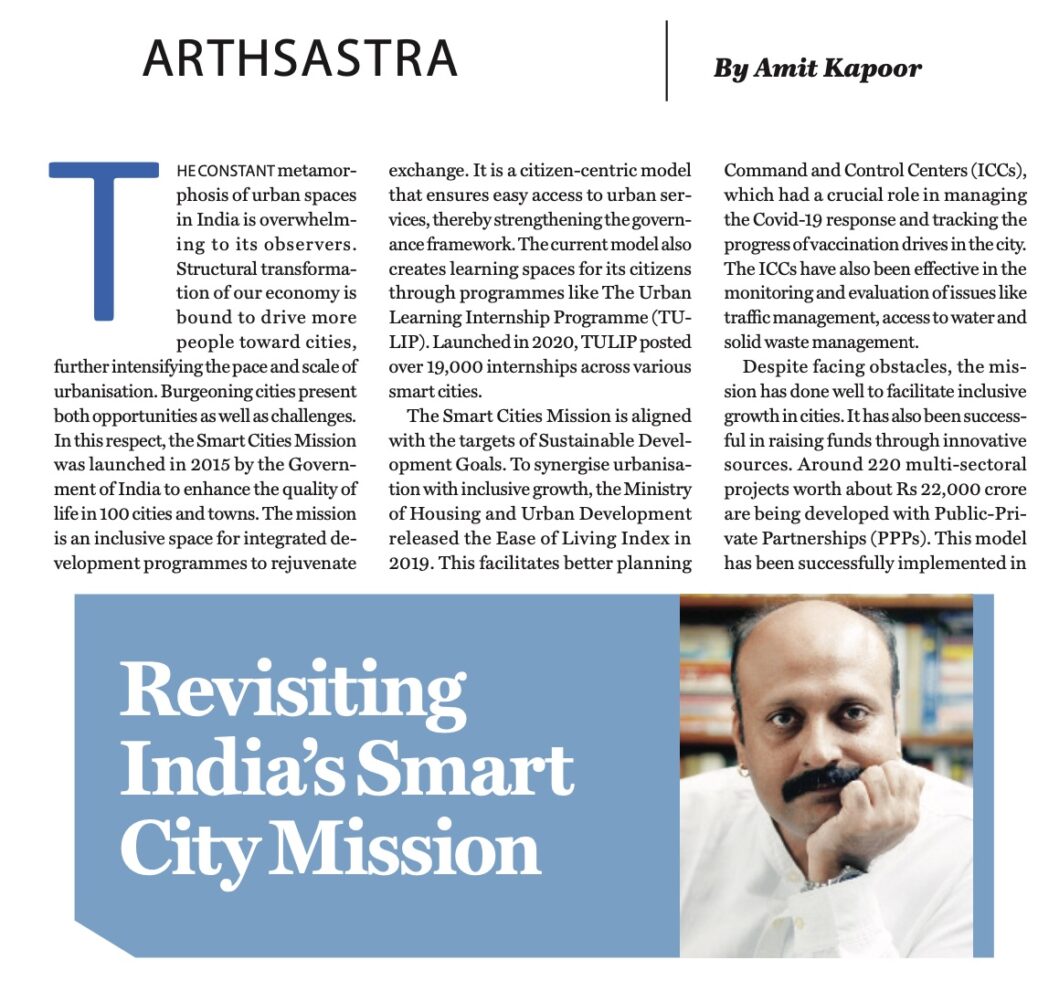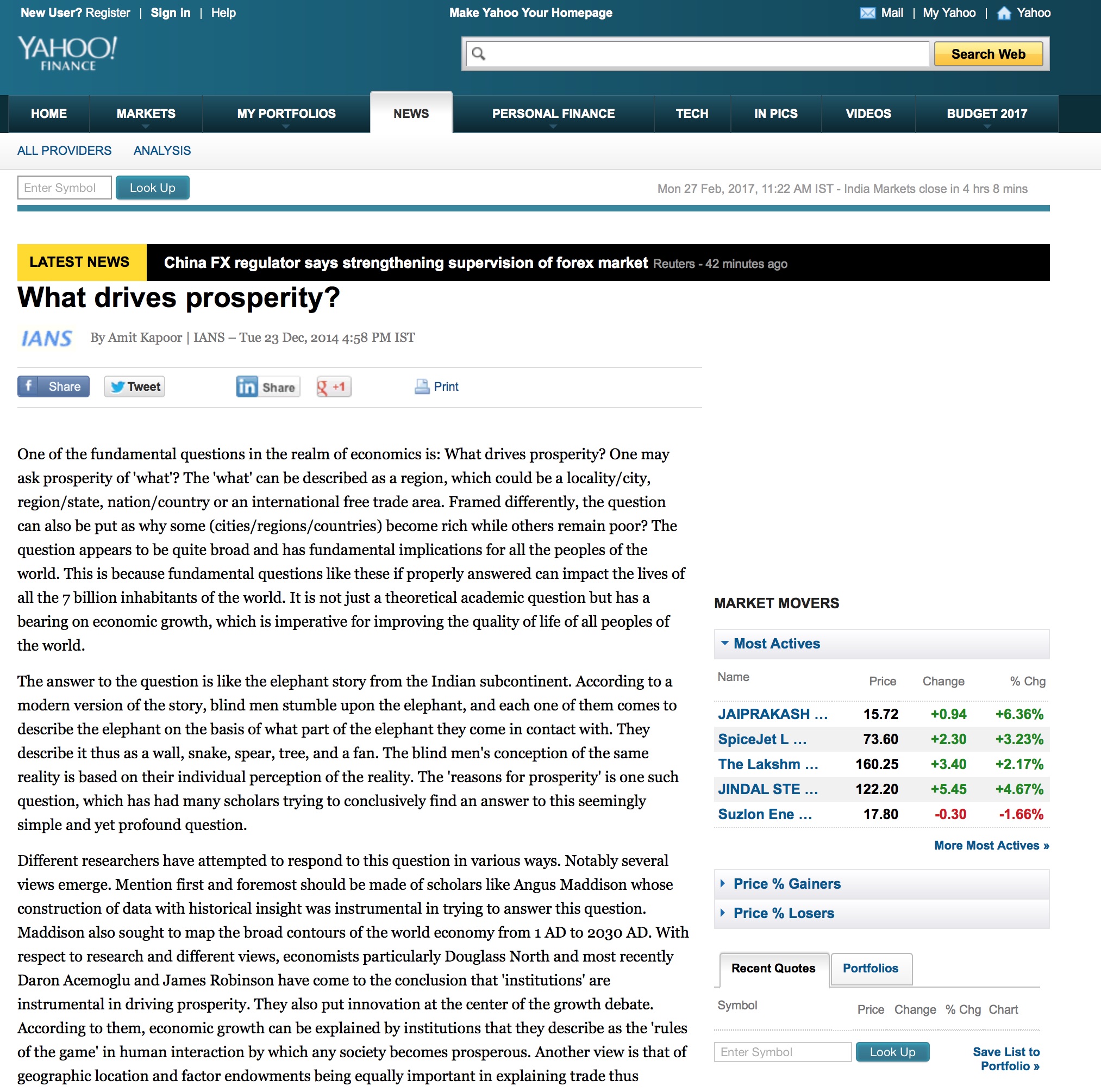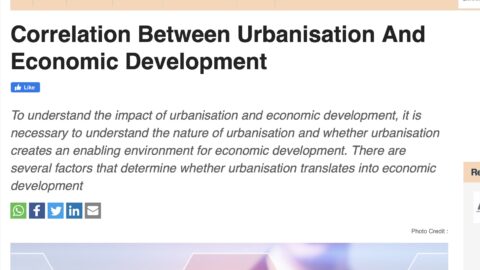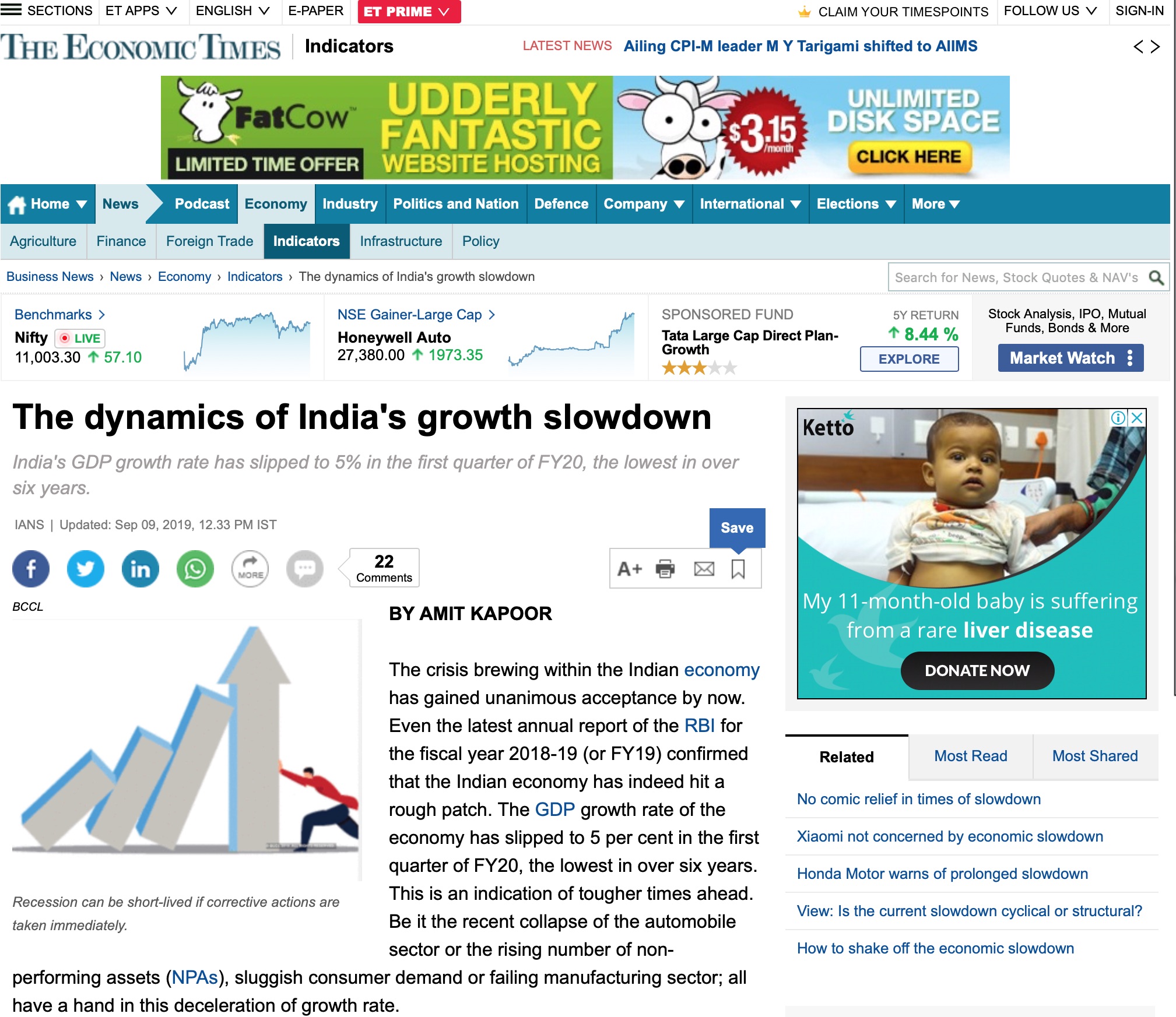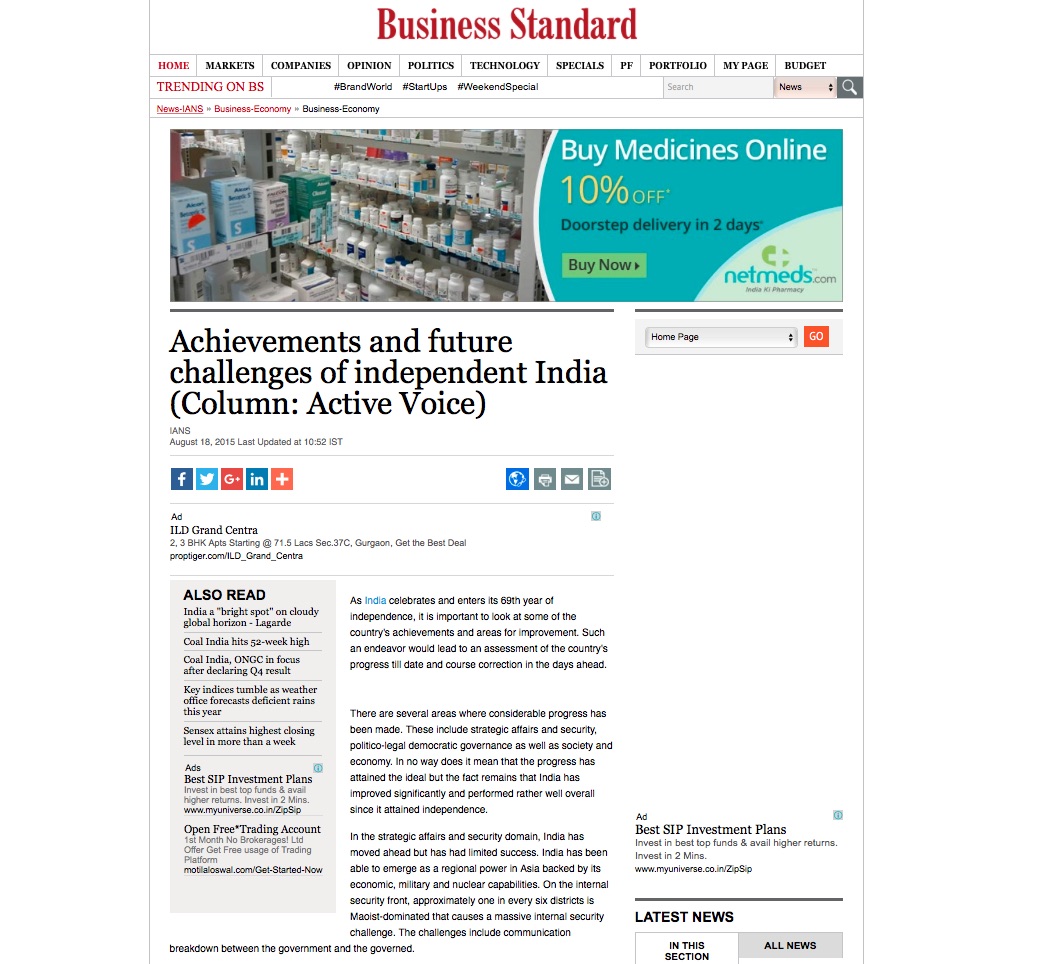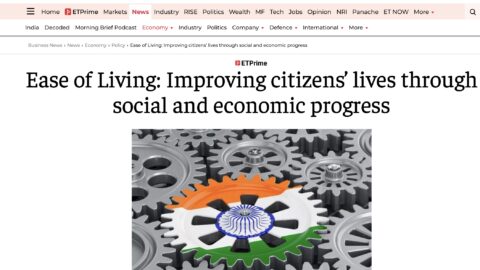Making Our Cities Smart and Sustainable: Revisiting India’s Smart City Mission
The constant metamorphosis of urban spaces in India is overwhelming to its observers. Structural transformation of our economy is bound to drive more people toward cities, further intensifying the pace and scale of urbanisation. Burgeoning cities present both opportunities as well as challenges. In this respect, the Smart Cities Mission was launched in 2015 by the Government of India to enhance the quality of life in 100 cities and towns. The Mission is an inclusive space for integrated development programs to rejuvenate cities in India. As the project enters its 8th year under the backdrop of a pandemic, it begs the need to strategise for the future.
Indian cities, especially with their brimming population, puts undue pressure on urban resources and infrastructure. A smart initiative addressing diverse portfolios and developing core urban infrastructure is indeed the right way to go. It is now the state’s responsibility to tailor high impact interventions for extended benefits. The reliance on secure digital ecosystems and data driven governance is what makes a city truly “smart”. Indian Urban Data Exchange (IUDX) was launched in 2020-21 to facilitate secure and authenticated data exchange. It is a citizen-centric model that ensures easy access to urban services, thereby strengthening the governance framework. The current model also creates learning spaces for its citizens through programs like The Urban Learning Internship Program (TULIP). Launched in 2020, TULIP posted over 19000 internships across various smart cities.
The Smart Cities Mission is aligned with the targets of Sustainable Development Goals. To synergise urbanization with inclusive growth, Ministry of Housing and Urban Development released the Ease of Living Index in 2019. This facilitates better planning and management of smart cities within the framework of sustainability. After all, smart cities must stay smart in the future. To make cities more liveable , the mission has supported transition to renewable energy sources. 94 Smart Solar projects worth 1,266 crore was implemented across cities.
The lethal waves of the pandemic coupled with the rising incidence of climate catastrophes revealed the interdependent nature of problems facing humanity. It called for concerted efforts of all the stakeholders and coordination across diverse sectoral services. In this spirit, 76 cities had operationalised Integrated Command and Control Centers (ICCs), which had a crucial role in managing the COVID 19 response and tracking the progress of vaccination drives in the city. ICCs have also been effective in the monitoring and evaluation of issues like traffic management, access to water and solid waste management.
Despite facing obstacles, the mission has done well to facilitate inclusive growth in cities. It has also been successful in raising funds through innovative sources. Around 220 multi-sectoral projects worth about ₹22,000 are being developed with Public-Private Partnerships (PPPs). This model has been successfully implemented in smaller cities as well. The task is to favour now more pan-city projects than the area-based approach without much delay. Excessive focus on small areas within a city can intensify inequalities and affect the social mobility of citizens. Also, a renewed thrust for greenfield projects is essential to take this mission forward.
Currently, we are battered by waves, variants and climate change. The Smart Cities Mission offers a way out with smart policymaking. The onus is on the government and stakeholders to channelise this mission and positively harness the opportunity for a sustainable urban renaissance in India.
The article was published with Business World.

